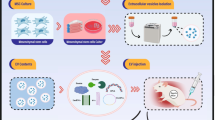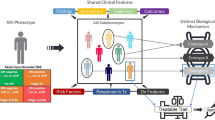Abstract
Background
Sepsis is a commonly seen severe case in clinical practice and the main cause of health loss worldwide.
Objective
We investigated the biological function of LRG1 and its underlying molecular mechanisms in sepsis-renal injury. Mice of sepsis model group were subjected to cecal ligation and puncture (CLP) surgery after anesthetization. THP-1 cell was induced by LPS for vitro model.
Results
The mRNA and protein levels of LRG1 in renal tissue of sepsis model were reduced. LRG1 could reduce the inflammation reaction in model of sepsis-renal injury. In addition, LRG1 up-regulation reduced inflammation reaction and ROS production levels in vitro model via the activation of HIF-1α and suppression of NLRP3 inflammasome. Knockout of LRG1 increased inflammation reaction and ROS production levels in vitro model via the inactivation of HIF-1α and induction of NLRP3 inflammasome. Furthermore, the inhibition of HIF-1α reduced the effects of LRG1 on NLRP3 inflammasome in vitro model.
Conclusions
The present study suggests that LRG1 expression reduced inflammation of sepsis-renal injury via activation of NLRP3 inflammasome by HIF-1α, thereby may be a promising therapeutic target of sepsis-renal injury.








Similar content being viewed by others
References
Abais JM, Xia M, Zhang Y, Boini KM, Li PL (2015) Redox regulation of NLRP3 inflammasomes: ROS as trigger or effector? Antioxid Redox Signal 22:1111–1129
An Y, Zhang H, Wang C et al (2019) Activation of ROS/MAPKs/NF-κB/NLRP3 and inhibition of efferocytosis in osteoclast-mediated diabetic osteoporosis. FASEB J 33:12515–12527
Cornelius DC, Travis OK, Tramel RW et al (2020) NLRP3 inflammasome inhibition attenuates sepsis-induced platelet activation and prevents multi-organ injury in cecal-ligation puncture. PLoS ONE 15:e0234039
Dai W, Huang H, Si L et al (2019) Melatonin prevents sepsis-induced renal injury via the PINK1/Parkin1 signaling pathway. Int J Mol Med 44:1197–1204
Deng H, Chen F, Wang Y et al (2020) The role of activated NLRP3 inflammatory body in acute kidney injury in rats caused by sepsis and NLRP3-TXNIP signaling pathway. Saudi J Biol Sci 27:1251–1259
Gao Y, Xie Z, Ho C et al (2020) LRG1 promotes keratinocyte migration and wound repair through regulation of HIF-1α stability. J Invest Dermatol 140:455-464 e458
Gibier JB, Swierczewski T, Csanyi M et al (2021) MUC1 mitigates renal injury and inflammation in endotoxin induced acute kidney injury by inhibiting the TLR4-MD2 axis and reducing pro-inflammatory macrophages infiltration. Shock. https://doi.org/10.1097/SHK.0000000000001742
Hong Q, Zhang L, Fu J et al (2019) LRG1 promotes diabetic kidney disease progression by enhancing TGF-β-induced angiogenesis. J Am Soc Nephrol 30:546–562
Jiang Q, Geng X, Warren J et al (2020) Hypoxia inducible factor-1α (HIF-1α) mediates NLRP3 inflammasome-dependent-pyroptotic and apoptotic cell death following ischemic stroke. Neuroscience 448:126–139
Kelley N, Jeltema D, Duan Y, He Y (2019) The NLRP3 inflammasome: an overview of mechanisms of activation and regulation. Int J Mol Sci 20:3328
Kellum JA, Wen X, de Caestecker MP, Hukriede NA (2019) Sepsis-associated acute kidney injury: a problem deserving of new solutions. Nephron 143:174–178
Kim JY, Leem J, Hong HL (2021) Melittin ameliorates endotoxin-induced acute kidney injury by inhibiting inflammation, oxidative stress, and cell death in mice. Oxid Med Cell Longev 2021:8843051
Lee H, Fujimoto M, Ohkawara T et al (2018) Leucine rich α-2 glycoprotein is a potential urinary biomarker for renal tubular injury. Biochem Biophys Res Commun 498:1045–1051
Li Q, Liang X, Yang Y, Zeng X, Zhong X, Huang C (2020) Panax notoginseng saponins ameliorate cisplatin-induced mitochondrial injury via the HIF-1α/mitochondria/ROS pathway. FEBS Open Bio 10:118–126
Liu JX, Yang C, Zhang WH et al (2019a) Disturbance of mitochondrial dynamics and mitophagy in sepsis-induced acute kidney injury. Life Sci 235:116828
Liu W, Zhang W, Wang T et al (2019b) Obstructive sleep apnea syndrome promotes the progression of aortic dissection via a ROS- HIF-1α-MMPs associated pathway. Int J Biol Sci 15:2774–2782
Minutoli L, Puzzolo D, Rinaldi M et al (2016) ROS-mediated NLRP3 inflammasome activation in brain, heart, kidney, and testis ischemia/reperfusion injury. Oxid Med Cell Longev 2016:2183026
Pu Z, Han C, Zhang W et al (2019) Systematic understanding of the mechanism and effects of Arctigenin attenuates inflammation in dextran sulfate sodium-induced acute colitis through suppression of NLRP3 inflammasome by SIRT1. Am J Transl Res 11:3992–4009
Pu Z, Liu Y, Li C, Xu M, Xie H, Zhao J (2020) Using network pharmacology for systematic understanding of geniposide in ameliorating inflammatory responses in colitis through suppression of NLRP3 inflammasome in macrophage by AMPK/Sirt1 dependent signaling. Am J Chin Med 48:1693–1713
Romagnoli S, Ricci Z, Ronco C (2018) CRRT for sepsis-induced acute kidney injury. Curr Opin Crit Care 24:483–492
Sun S, Wang J, Wang J, Wang F, Yao S, Xia H (2019) Maresin 1 mitigates sepsis-associated acute kidney injury in mice via inhibition of the NF-κB/STAT3/MAPK pathways. Front Pharmacol 10:1323
Sun J, Wei S, Zhang Y, Li J (2021) Protective effects of astragalus polysaccharide on sepsis-induced acute kidney injury. Anal Cell Pathol (amst) 7178253:2021
Tanuseputero SA, Lin MT, Yeh SL, Yeh CL (2020) Intravenous arginine administration downregulates NLRP3 inflammasome activity and attenuates acute kidney injury in mice with polymicrobial sepsis. Mediators Inflamm 2020:3201635
van der Slikke EC, Star BS, van Meurs M, Henning RH, Moser J, Bouma HR (2021) Sepsis is associated with mitochondrial DNA damage and a reduced mitochondrial mass in the kidney of patients with sepsis-AKI. Crit Care 25:36
Verma SK, Molitoris BA (2015) Renal endothelial injury and microvascular dysfunction in acute kidney injury. Semin Nephrol 35:96–107
Wang X, Abraham S, McKenzie JAG et al (2013) LRG1 promotes angiogenesis by modulating endothelial TGF-β signalling. Nature 499:306–311
Xu W, Che Y, Zhang Q et al (2020) Apaf-1 pyroptosome senses mitochondrial permeability transition. Cell Metab 49:379
Yang FJ, Hsieh CY, Shu KH et al (2020) Plasma leucine-rich α-2-glycoprotein 1 predicts cardiovascular disease risk in end-stage renal disease. Sci Rep 10:5988
Yu LM, Zhang WH, Han XX et al (2019) Hypoxia-induced ROS contribute to myoblast pyroptosis during obstructive sleep apnea via the NF-κB/HIF-1α signaling pathway. Oxid Med Cell Longev 2019:4596368
Zhang J, Zhu L, Fang J, Ge Z, Li X (2016) LRG1 modulates epithelial-mesenchymal transition and angiogenesis in colorectal cancer via HIF-1α activation. J Exp Clin Cancer Res 35:29
Zheng C, Wu D, Shi S, Wang L (2021) miR-34b-5p promotes renal cell inflammation and apoptosis by inhibiting aquaporin-2 in sepsis-induced acute kidney injury. Ren Fail 43:291–301
Acknowledgement
None.
Funding
None.
Author information
Authors and Affiliations
Contributions
WD participated in the study design and carried out the study; YS participated in collecting data and data analysis. Y-HB performed the statistical analysis and drafted the manuscript.
Corresponding author
Ethics declarations
Conflict of interest
Wenjing Du declares that he/she has no conflict of interest, Yiquan Sang declares that he/she has no conflict of interest, and Yun-Huan Bai declares that he/she has no conflict of interest.
Ethical approval
Protocols of the investigation were approved by the ethics committee of Xuzhou Central Hospital.
Additional information
Publisher's Note
Springer Nature remains neutral with regard to jurisdictional claims in published maps and institutional affiliations.
Supplementary Information
Below is the link to the electronic supplementary material.


Rights and permissions
About this article
Cite this article
Du, W., Sang, Y. & Bai, YH. LRG1 expression reduced inflammation of sepsis-renal injury via activation of NLRP3 inflammasome by HIF-1 alpha. Mol. Cell. Toxicol. 18, 419–429 (2022). https://doi.org/10.1007/s13273-021-00214-w
Accepted:
Published:
Issue Date:
DOI: https://doi.org/10.1007/s13273-021-00214-w




